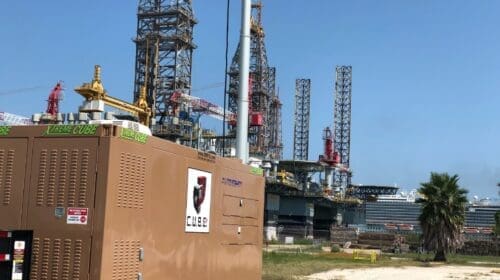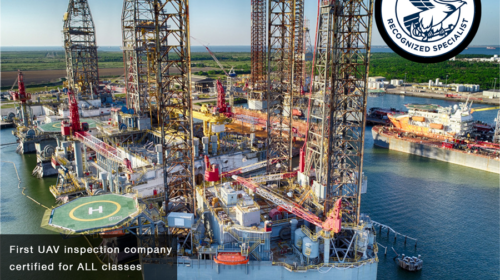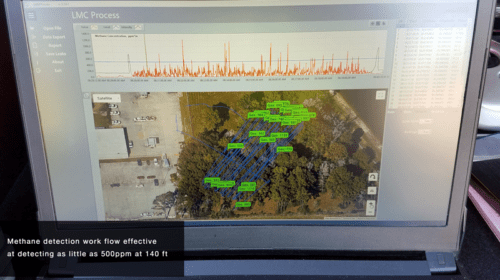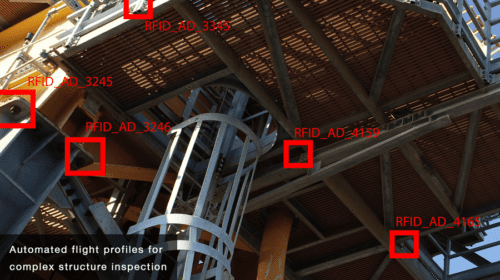It seems that initial impressions and preliminary promises of the efficiency gains from utilizing UAS (Unmanned Aircraft Systems) has lost its luster in recent years due to bureaucratic bottlenecks and increased safety concerns. The promises from the UAS industry about taking over every use case they could think of from commercial package delivery to industrial inspections has faded as these intentional roadblocks have been put in place, or has it? The rapid expansion of these technologies on the frontlines of the industry have been prolific, the increasing availability of UAS solutions are becoming even more readily available. We are seeing technologies that were previously only available to industrial applications becoming more available in the consumer space. The companies in the oil and gas industry are openly embracing these rapid advances in UAS technology are beginning to enjoying the benefits. The reality of all of this is that UAS technology is here to stay and specialized companies are cropping up all over, offering industry-specific expertise and guidance that are readily providing safer and more efficient solutions and workflows that offer massive efficiencies and gains over age-old techniques.
What does this mean for the oil and gas industry today? It’s really quite simple, this means midstream pipeline inspections are becoming cheaper, safer and more reliant as robust fused sensor data solutions are coupled with advanced data analysis to generate reports that are beyond what was thought even possible in the recent past. This is attained through the utilization of several technologies that are emerging at the forefront of all technology-based companies. From the utilization of AI (Artificial Intelligence) data analysis, real-time data/video processing, and aerial based infrastructure inspections, to many versions of advanced sensors. The capabilities of these advanced sensor packages range from complex solutions such as LiDAR, with 2-3 centimeter of absolute accuracy, to 30 times zoom electro-optical cameras that can see even the smallest of incursions for right-of-way inspections.
Traditionally right-of-way inspections are performed either by a crew walking or driving trucks and ATVs (All-Terrain Vehicles) through the corridors, another option to complete these is by flying the pipeline with a manned helicopter or fixed wing aircraft. Typically, visual inspections are sufficient in identifying standard anomalies; any suspected issues can then be further investigated using more sophisticated sensor packages when needed. If an anomaly is detected during these inspections, as much observational data as possible is collected in the field to determine that the inspection team has the proper data set to make an informed decision. This is usually based on the experience of the inspector or the direction of the pipeline operator who is at a remote location. After the analysis is performed, a report from these inspections is distributed that details any anomalies found. At this point, the data is then sent to the pipeline operator for decision making authority and corrective action generation. This end report typically includes the Pipeline Name, Date/Time of anomaly, Location, a description of each observation, and any previously reported observations, as well as a photo of the observation.
Advancing on this dynamic slightly is the typical commercial UAS based inspection operation which takes place with a laptop on a field table. This type of agile, small footprint setup is great for capturing small area inspections. It’s also a great fit when most UAS systems have a maximum endurance of about 45 minutes of total operating time. The actual on target inspection time is much smaller than that due to safety limitations of battery life and other environmental impacts. It also makes swapping delicate sensors, charging batteries, protecting equipment from field environmental conditions difficult and sometimes impossible. And as far as reporting goes, you can expect the same subjective data to be provided through the traditional methods. The efficiency gains are obvious but this clearly still has its limitations.
Unfortunately, with the midstream oil and gas industry having millions of miles of pipeline requiring inspection, this approach isn’t capable of creating the efficiency gains needed to truly advance and revolutionize the industry. To the contrary, it’s creating more data to analyze and more questions regarding how much further investigation needs to take place before the Pipeline Operator feels confident making a decision. The economics of midstream oil and gas make it necessary that companies pay just enough to ensure there aren’t failure conditions and not a penny more. This drives for inspection with purpose that creates actionable data, not a reason to schedule another inspection.
Imagine having a mobile command center to fly these UAS’s that is capable of supporting a pilot and sensor operator for hours of operation in a self-contained climate-controlled environment, with a separate room for UAS storage and maintenance, along with redundant self-sufficient power that ensures that the crew doesn’t lose an inspection due to a power outage. The UAS would collect data while flying for up to five hours and deliver real-time video with AI object detection. The AI would be capable of autonomously identifying pipeline right-of-way incursions for erosion, encroachment, leaks, and damaged or missing pipeline markers. All of this data can be consumed in real time with the option of the pipeline operator giving real-time guidance to ensure critical data is collected the first time, every time. The solution provides video snips and still images with embedded GIS files that will be delivered in a report detailing the anomalies identified. What was just described is AviSight’s Live Look Fault Vision™ operating out of the C3UBE™ mobile command center.
This industrial inspection revolution isn’t just about teleporting the expertise to the field without ever leaving the office, but it is also about providing more actionable data to the data analysis experts on a more efficient timeline. For example, imagine a right-of-way inspection that identifies a tractor nearby the corridor. Does this mean there exists the potential for corridor incursion? With only a single still photograph along with the same object identified in a previous inspection being the only information that the Pipeline Operator has to act on, it’s only reasonable to further investigate. It is also fair to assume that tractor was somehow missed in the last inspection. But when you add AI software that can look back at every snapshot ever taken and tell you that with 99.9 percent certainty that what you see is a tractor near the corridor, and the software has determined that there is a 0.01 percent chance of creating a corridor incursion because it’s been there for the last ten years. You are now making decisions on actionable data and not reviewing inspections that create more questions.
The inspection revolution has begun, and the midstream pipeline companies that are embracing this new technology are making more informed decisions, and creating the best results by utilizing these advanced technologies that take advantage of all of the information available to the enterprise.
Photos courtesy of AviSight
A Systems Engineering Project Manager for the Lockheed Martin Skunk Works working with the best engineers in the business on the cutting edge of technology. In this role, Chris is responsible for over 80 employees on a diverse engineering team that provides direct customer solutions in worldwide locations.
His diverse background includes 5 years working avionics on AV-8B Harriers in the United States Marine Corps, deploying several times including to Afghanistan after 9/11. After leaving the military he moved onto a litany of different responsibilities at Lockheed Martin Aeronautics, ranging from avionics to system and flight engineering, where he has worked on a variety of aircraft including the F-22 Raptor, C-130J, U-2 Dragon Lady and eventually moving onto one of the coveted system engineering positions at the highly classified and infamous Lockheed Martin Skunk Works.
Finishing his professional degree from Embry-Riddle in 2006 where he graduated with a degree in Aerospace Engineering and then moved on to a Masters program in Unmanned and Autonomous Systems Engineering, he has advanced in every capacity he has ever held winning multiple coveted awards in the industry to include a NOVA award in 2010, which is currently the companies highest honor.
As the co-director of Engineering and technology, Dan Dirksen specializes in implementing new technologies and creating processes to streamline the flow of actionable data. Prior to Avisight, Dirksen has steadily grown his experience in the aerospace industry over the past 15 years as an avionics test engineer with Lockheed Martin,designengineer with Northrop Grumman, and asengineeringconsultant for various emerging companies. He holds a B.S. in Aerospace Engineering from San Jose State University.












